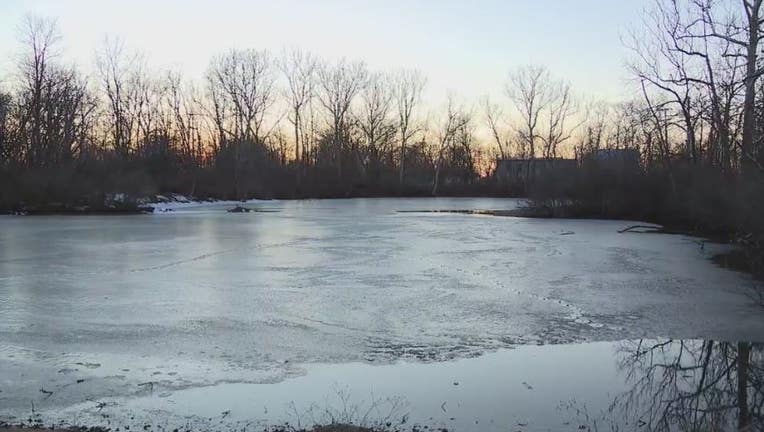Rising temperatures could create dangerous conditions on Michigan lakes -- Tips for staying safe on ice

DETROIT (FOX 2) - The weekend was frigid, but temperatures are rising this week, making for potentially dangerous conditions on frozen lakes, rivers, and ponds.
Though highs are hovering around freezing Monday, they will jump to near 50 and stay high for the next week.
View the latest weather forecast.
How thick does ice need to be to skate or snowmobile?
- Five inches thickness minimum for general use such as ice fishing, ice skaters or foot traffic
- Eight inches thickness minimum for travel by snowmobile, Off Road Vehicle (ORV)
- It is never recommended to drive a car or truck on the ice, which also voids any insurance claims
- Ice conditions on every lake change every day – even in the same location
Signs that ice could be thin or unsafe
- Moving water near a stream, river, unseen spring or inlet
- Slushy areas
- Depressions in the snow
- Heavy snow
- White "milky" or black-colored ice
- "Frazzle" ice weakened by the freeze-thaw cycles. Frazzle ice has tiny air pockets and often looks like frozen slush.
Tips for staying safe when going on ice
- Do not go out alone on the ice. Always take a partner or someone who can call 911or go for help in an emergency.
- Do not make the first tracks on the ice. Check with someone who has experience with a lake or pond before you venture out on the ice.
- If you hear the ice crack or detect unsafe ice, immediately lie down (which will distribute your weight) and crawl back to safer ice by the same way you came.
- Always leave a travel plan with someone who can call for help and direct a search party if you do not return.
- Dress appropriately for changing weather conditions. Dress in layers to protect all exposed parts of your body.
- Consider wearing a personal flotation device (PFD) as part of your overall protective clothing or a flotation jacket or suit. Ice creepers attached to boots help keep you stable on the ice and can assist in self-rescue.
- Bring safety items such as a cell phone, whistle, rope, ice pick or awls, screwdriver, hand flares, flashlight, throwable PFD. Plan for a rescue.
- Double check the ice thickness with an ice spud, auger or cordless drill. If you discover a weak spot, retrace your route off the ice. Keep a distance between others in your group.
- Snowmobiles, ORVs and vehicles on the ice increase your risk of falling through, especially at night. Many accidents occur when operators are driving at a high rate of speed and are unable to slow or stop in time to avoid open water or unsafe ice. Beware of your speeds.
What to do if someone falls through ice
- If someone falls through the ice, do not run to the hole. Call 911. Then use a pole, branch, rope or any other handy object, which can be extended to the victim from a safe position. You cannot help if you become a victim.
- If you fall through the ice, try not to panic, because this will only hinder your self-rescue actions. Call out for help and kick your feet while getting your hands and then arms up onto safer ice. This is when the ice awl or screwdriver will help you with your self-rescue. Continue to "swim" up onto the ice far enough to crawl or "roll-out" to safer ice.
What to do if an animal is on thin ice
- If your pet goes out onto the ice, resist the urge to go out after them. Stay at a safe position on shore and persuade them back to safety.
- If a wild animal is on the ice, remember that wildlife venturing onto unsafe ice is a natural occurrence. Wildlife such as deer are strong swimmers prepared for cold weather and find their own way off the ice. Most often, wildlife discovered in the water are injured and succumbed to injuries from predators or natural forces.

